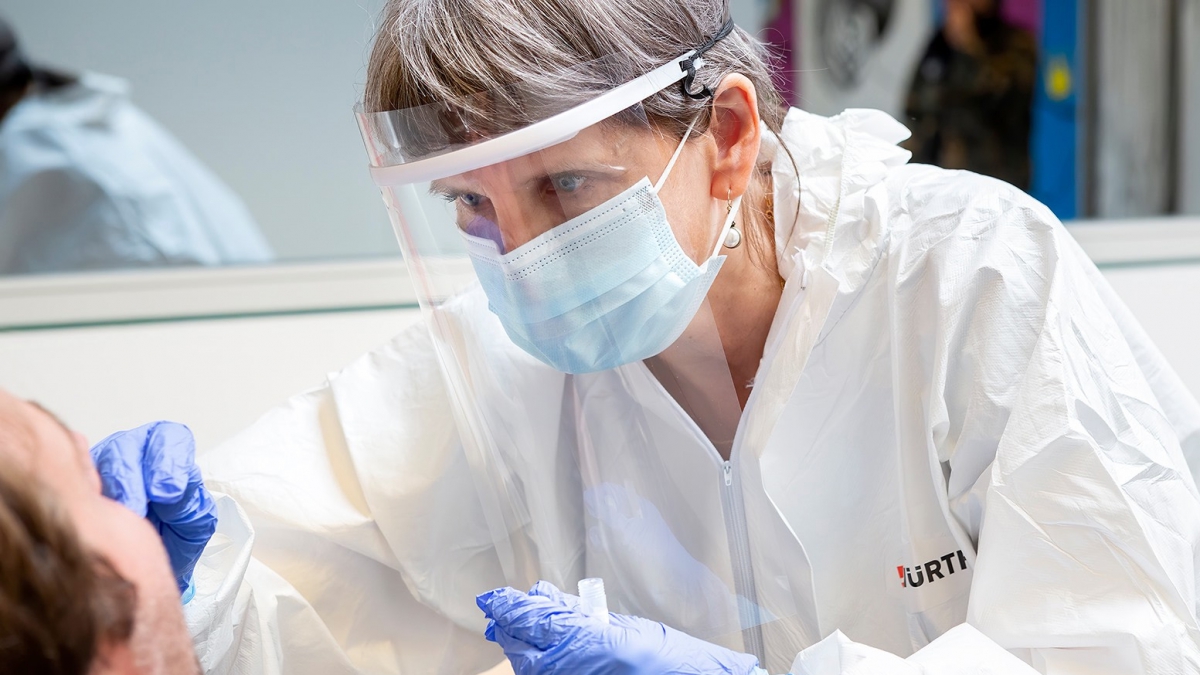Wages (Pay as you earn)
14. Aug 2020
DKK 875 million in wages in July – a swift recovery from April/May slump

The graph below shows a pre-Covid projection of wage expenditure levels for the March-July 2020 period.
The red dots show the projected estimate (the point estimate) for March, April, May, June and July. The grey fields show the degree of uncertainty (80% and 95%). The blue line shows the actual wage expenditures, and the blue dots show the monthly figures for March-July this year. The difference between the blue and red dots give an indication of how the Covid-19 pandemic has affected wage expenditures in the Faroe Islands.
Wage trends in the four main industrial sectors
The four graphs below show wage expenditures in the four main industrial sectors: ‘the public service sector’, ‘the private service sector’, ‘fishing and other natural resources’ and ‘construction and other manufacturing’.
A comparison between the actual and projected wage expenditures reveals a significant change in the private service sector, which saw a decrease in July of DKK 12 million (4.5%) compared to the projected estimate. In May, this decrease was 16%.
The other industrial sectors have experienced less deviation from the projected trend.
About wage expenditures
Wage expenditures are subject to tax at source and are paid by companies based in the Faroe Islands. The statistics only cover wages for work done. Other payments and expenditures such as grants and post-employment benefits are not included.
All wage expenditures meeting the above requirements will be counted in regardless of the employee’s nationality.
About the trend
The trend describes the wage expenditure trend by adjusting for seasonal effects and error components in the figures.
About the projection
Each individual projection is a combined projection consisting of three statistical models. The projections are substantiated by training and test sets over a 12-month period. The substantiations have been both numeral and visual in relation to the 12-month test set.
About the main industrial sectors
Grouped under the ‘fishery and other natural resources’ sector are the following branches: agriculture, fishing, aquaculture, extraction of raw materials, fish processing and activities not elsewhere indicated.
The ‘construction and other manufacturing’ sector includes: shipyards/machine shops, other manufacturing, construction and energy.
The ‘private services’ sector includes: trade and repair, hotels and restaurants, sea transport, other transport, communications, finance and insurance, business services. household services and organisations, culture, etc.
‘Governmental and other services’ includes: public administration and services (central administration, municipalities, education, health and social work), government institutions and the Ministries of Education and Health.